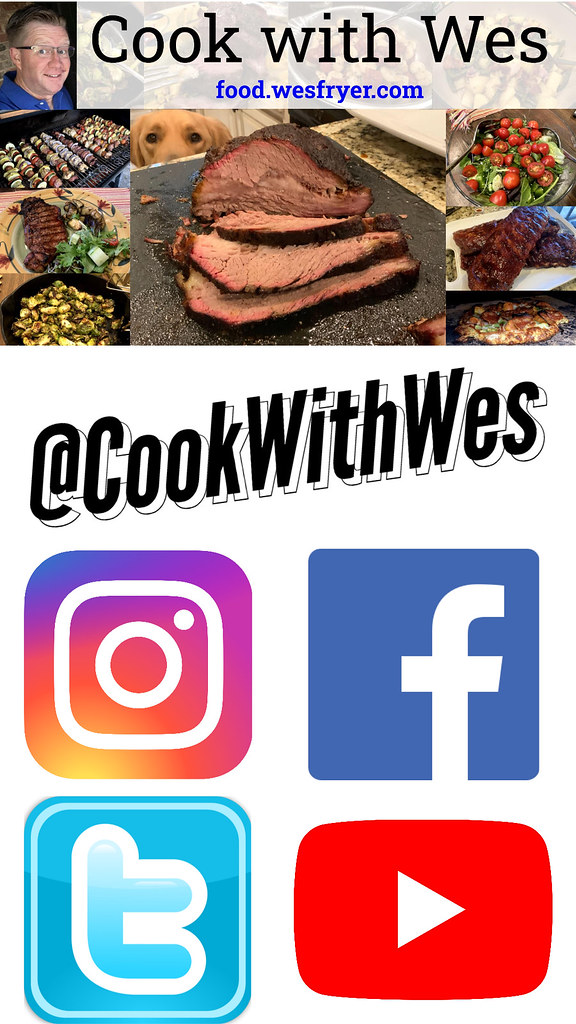I love to play with media. As my wife, Shelly, has become a health coach this fall and learned more about ways to use social media to “share our story” of weight, diet and health transformation, I’ve been learning some new things about social media along with her.
One of the things I’ve learned in the past couple weeks is how important STORIES are on social media platforms including Instagram and Facebook. I’m guessing this is true for other platforms like Snapchat and TikTok, but I’m not a big user of those platforms at this point. But I am using a Facebook page, an Instagram channel, and a Twitter channel to share my cooking adventures, discoveries and creations under the channel name, “Cook with Wes.” Stories are important because a lot of people watch them, who may or may not view posts you share to your channel. You can view the channel names of people / accounts who view your story, and both Instagram and Facebook keep track of how many times your story is viewed, too. This feedback is helpful and interesting, since it always reveals more “engagement” with a story than you would realize just looking at a post, which many people might see but never “like” or comment on.
This morning I learned about the mobile video editing app Mojo from Shelly, which has the tagline, “Create animated stories.” I used it to create a “reel video” on Instagram of my breakfast “sausage and egg scramble” cook, which I also shared to my Cook with Wes Facebook page and Twitter channel.
I wanted to include a “bumper image” at the end of my reel video which will encourage people to follow @CookWithWes across my social media channels, so I used the web version of Adobe Spark, now rebranded as “Adobe Creative Cloud Express,” to create an image collage with the custom dimensions of 1080 x 1920 pixels.
I learned you can add music to a Reel video either in Instagram when you post your video (and use copyrighted music clips which have apparently been cleared with the original artist / copyright owners) or use copyright-friendly music included in the Mojo app. I tried both, but ended up going with a Mojo music track.
The most frustrating part of this creation process was figuring out how to PREVENT the Mojo app from “zooming in” on my final image, which I wanted to display full-size. I ended up exporting my Mojo project first WITHOUT audio, using the time-lapse cooking video and two zoomed-in image stills, and THEN creating a second project in which added my social media sharing bumper image.
As an aspiring digital storyteller, I’ve historically been averse to recording videos or even taking pictures in “portrait” mode on my iPhone. Since I’ve generally thought of myself as someone creating for a standard sized / large format television or projector screen, shooting in portrait mode instead of landscape mode on your smartphone results (I’ve thought in the past) in “lost screen estate.” During the “digital storytelling day” of past iPad Media Camps I’ve led, I’ve sometimes shared the funny video, “Vertical Video Syndrome” to emphasize this idea.
The reality of today’s media and information landscape, however, is that a lot of media IS CREATED for mobile screens, so “portrait mode” CAN BE a preferred format. This is an important shift in thinking I’m glad to make. It’s an example of how we as adults (and me specifically) can become fixed in our opinions and ideas about media and communication. It’s important, however, to regularly subject our assumptions to reflection and analysis, and be willing to revisit them. I’ve now done this with my thinking about media recording formats.
This change also reflects a basic question for media literacy teachers and students to ask: Who is the intended audience? If that audience is primarily going to watch / consume your media creation on a mobile device, “portrait mode” (which is used for Instagram Reels, for example) may be the best choice.
In 2022, I will continue to update my “Show with Media: What Do You Want to Create Today?” website, and also continue “playing with media” as I enjoy cooking and sharing my cooking creations via my various @CookWithWes channels.
As I finish up my 7th year working at a private school and 3rd year teaching middle school media literacy there, I’m also going to continue encouraging my students to “talk with media” and especially utilize video as “the pencil of the 21st century.”
How are you “playing with media” as we gaze into the future, on the edge of 2022?!

